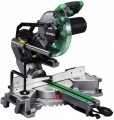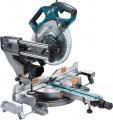Power source
By type of power source, all modern saw can be divided into electric and
gasoline. The common difference between them is that electrical units are more compact and lighter, less noisy, easy to maintain and do not produce exhaust gases, so they can be used indoors without restrictions. Petrol tools, in turn, combine high power and independence from power grids, but they are heavy, bulky, more difficult to operate and repair, more expensive (both in terms of their own cost and fuel price) and are generally designed for use outside premises. Therefore, most modern saw are made electric, which in turn can use different types of power:
-
Power supply (230 V). Connection to a standard 230 V household network, in other words, a regular socket. This option can be used both in portable saw and in stationary tools of relatively low power (up to 3.5 kW). There are sockets almost everywhere where there is electricity at all, and the operating time of such units is almost unlimited (as long as there is voltage in the network). The main disadvantage of such a power supply is the presence of a power cord that does not allow you to go far from the outlet (and with a portable tool, you also have to make sure that the cord does not get under the canvas).
-
Power supply (110 V). Tools powered in the American and Japanese manners - from power networks with a voltage of 110
...V. Power tools with such an operating supply voltage are produced for the market of North and Central America, the Land of the Rising Sun, Saudi Arabia. Also, 110 V power grids are found in the UK. To avoid tool failure when connected to standard 230 V household networks, you will need an additional link in the face of a step-down transformer or a special 110 V converter.
- Power supply (400 V). Powered by a three-phase power supply with a voltage of 400 V. Such power is suitable even for high-power saw, but it is far from being available everywhere - basically a three-phase connection is available in workshops, workshops and other industrial premises. Therefore, this option is found exclusively in stationary tools (see "Type") of high power, for which a conventional socket is no longer enough.
- Accumulator. Powered by own battery. The main advantages of this option are mobility, the ability to work independently of sockets and the absence of a power cord that can interfere with work. On the other hand, such a power supply is not suitable for high-power saw, other things being equal, a cordless tool turns out to be noticeably heavier and more expensive than a mains one, and the operating time is limited by the battery charge. However, in most cases, the battery is made removable, which allows you to keep several batteries ready and change them as needed.
- Battery / power supply (230 V). Tools that allow two power options - from an outlet and from its own battery. See above for more details on each option, and their combination makes the saw as versatile as possible. So, if there are sockets nearby, you can work from the network, saving battery power (or even recharging it in the process), and if there is a problem with the sockets or the network cable interferes with work, you can switch to the battery. On the other hand, such versatility affects the price, and the tool itself still turns out to be more cumbersome and heavy than a purely network one.Power
Saw motor power in watts. For petrol tools (see "Power Source"), horsepower is additionally indicated, see below for details.
The higher the power, the better the tool is suitable for voluminous work and hard materials, the greater the depth of cut it can provide and the easier it can cope with significant loads. In addition, for different types of saws and different types of materials, the actual power values \u200b\u200bcan also be different. For example, a power of
2.5 – 3 kW is actually the limit for
chain saws, but in
chain saws this is an average figure, among such tools there are models of
3 – 4 kW and even
more. Detailed selection recommendations for various cases can be found in special sources.
No load blade speed
The maximum speed of the disk, provided by a saw of the appropriate design — disk, cut-off, etc. (see "Device").
Note that most of these saws use gearboxes, so that the blade revolutions are much lower than the engine revolutions (see above). This achieves an increase in torque, which in the case of saws is often more important than the high speed of the blade.
As for the specific number of revolutions, it is first of all worth noting that only saws with the same disc diameter can be compared according to this indicator. In these cases, higher speeds provide better performance, but the trade-off is reduced torque; such saws do better with relatively "light" materials. Conversely, low speeds reduce productivity, but allow the blade to effectively "bite" even into dense, stubborn workpieces. More specific recommendations regarding the choice of a saw according to the number of revolutions of the blade can be found in special sources.
Cutting depth
The greatest depth of cut provided by the saw.
In most types of saws (see “Device”), the depth of cut directly depends on both the engine power and the size of the tyre / disk. The specifications give a value for the maximum allowable size of the working nozzle; when using nozzles of a smaller size, the depth of cut, respectively, will be less. But in band saws, this depth is rather weakly related to the actual length of the tape — it is determined primarily by the length of the open section of the tape, which is directly involved in the work.
Anyway, the greater depth of cut makes the tool more versatile, but comes at the cost of weight, price, and electricity/fuel consumption. So when choosing, it is worth considering the real features of the planned work and the dimensions of the workpieces that are planned to be cut. As for specific values, the most modest tools provide a depth
of up to 50 mm ;
50 – 75 mm is considered a low indicator,
75 – 100 mm is average,
100 – 125 mm is above average,
125 – 150 mm is already quite an impressive thickness, and the most powerful modern saws can have a cutting depth
of more than 150 mm.
Cutting depth (45° angle)
Maximum cutting depth achieved when sawing at a 45° bevel.
This feature is indicated only for those models that are originally designed for sawing at an angle — for example, due to the special design of the attachment for the blade / blade (in stationary models, see "Type") or due to the inclined support platform (in manual) . The maximum angle of inclination of the saw in such models can be different (see below for more details), however, 45 ° is considered the standard option, so it is for this inclination that data on the depth of cut is given.
The general meaning of this parameter is quite obvious. On the one hand, a greater depth of cut allows you to cope with thicker workpieces and generally gives you more options; on the other hand, an increase in depth requires an increase in the size of the disk / canvas and an increase in power, which, accordingly, affects the price, dimensions and consumption of electricity / fuel.
Cutting width
The kerf width determines the maximum size of the cutting line, and therefore the maximum width of the workpiece that the saw can cut through in one go. The value of the kerf width depends primarily on the diameter of the saw blade. Additionally, the stroke of the broach mechanism should also be taken into account. Saws with a pulling mechanism provide a cut that exceeds the diameter of the cutting blade.
Saw angle
The maximum angle at which the working part of the saw can be tilted relative to the vertical. It can be indicated not only for stationary tools, but also for manual ones — in the event that the design provides for a support platform. It is worth paying attention to this parameter if you have to deal with oblique cuts: making such cuts by setting the saw to a certain angle is much more convenient than adjusting this angle manually.
Saw angle
The largest angle at which the working part of the saw can be rotated relative to the standard position (note that we are not talking about tilt, but about turning from side to side). This feature is often found in miter saws (see Device) which are not limited to straight cuts; turning the saw is the most convenient, and sometimes the only way to cut the workpiece obliquely.
Guides
Miter saws have
a broach system, which, thanks to parallel rails, allows the saw blade to move relative to the desktop back and forth along the cut line. This facilitates work with workpieces of large width, but significantly affects the weight and dimensions of the entire structure. At the same time, the guides along which the rails move can be both frontal and rear. The first type makes the design more compact, since no elements stick out. The second type, at the expense of compactness, makes the design more reliable.

